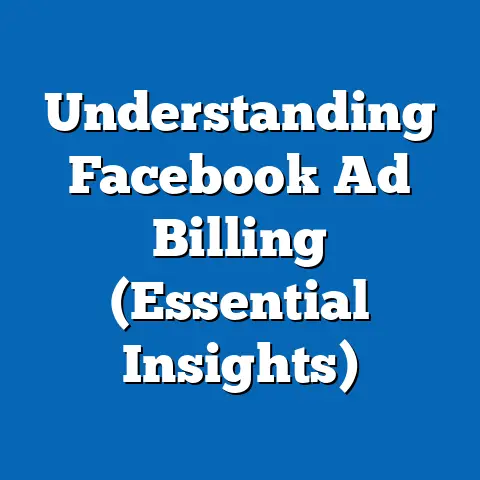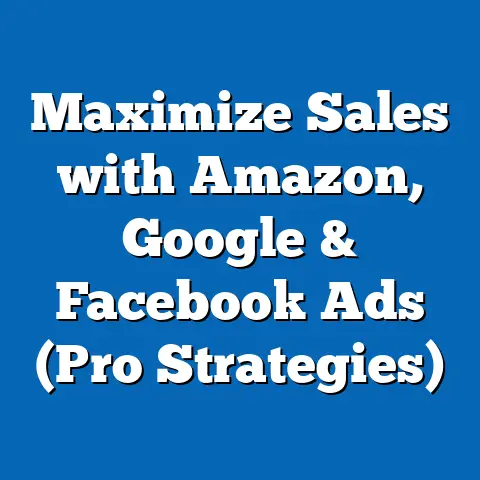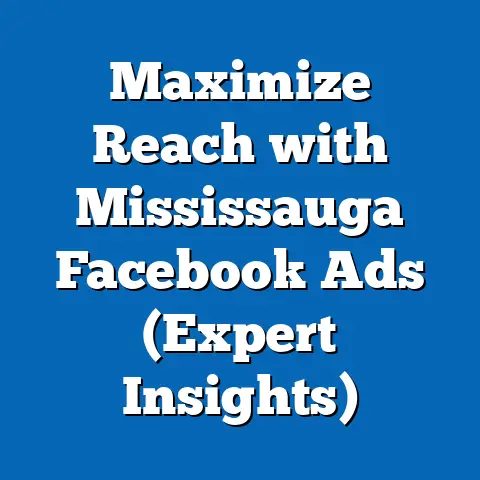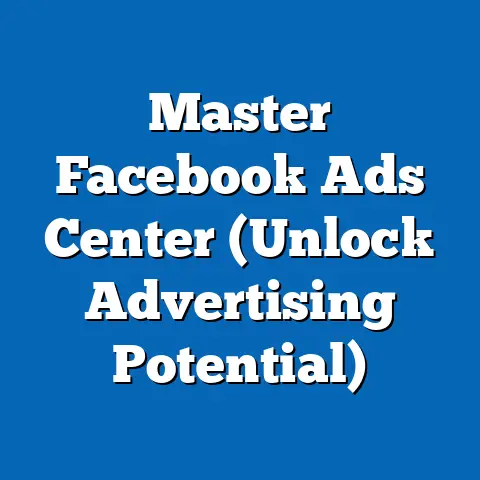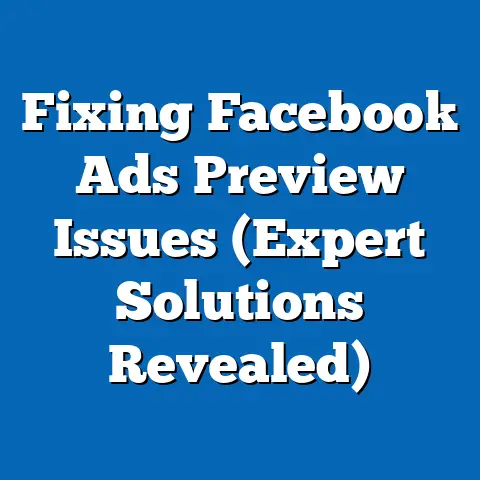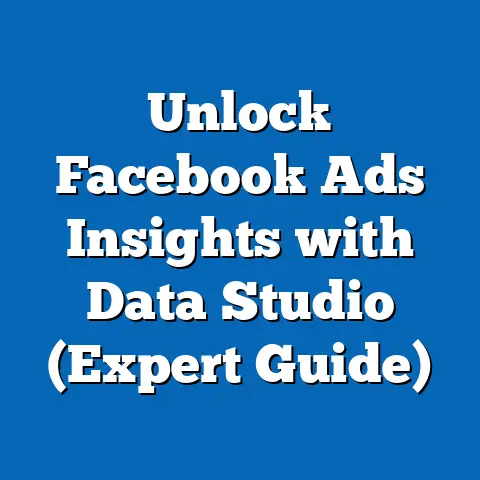Maximize ROI with Bing Ads on Facebook (Expert Strategies)
Just like choosing the perfect flooring can transform a house into a home, a well-crafted advertising strategy can transform a business. Think about it: hardwood floors bring warmth and elegance, tile offers durability and style, and plush carpet creates a cozy haven. Each choice is deliberate, designed to evoke a specific feeling and enhance the overall space. Similarly, in the world of digital advertising, every decision – from platform selection to ad copy – impacts your business’s performance. You need to be careful, creative, and focused on the outcome.
In today’s competitive digital landscape, maximizing return on investment (ROI) is crucial. I’ve seen countless businesses struggle to make their advertising dollars stretch, often spreading themselves too thin across too many platforms without a clear strategy. That’s why I’m going to share some expert strategies for leveraging the combined power of Bing Ads and Facebook. These aren’t just two separate channels; when used strategically together, they can create a powerful synergy that drives impressive results. Get ready to transform your advertising approach!
Understanding Bing Ads
Bing Ads, now known as Microsoft Advertising, often gets overlooked in the shadow of Google Ads. But I’ve found that it offers a unique set of advantages that can significantly boost your ROI. Think of Bing Ads as the sophisticated, slightly less crowded cousin of Google Ads. While Google dominates the search engine market, Bing still holds a significant share, particularly among older, more affluent users.
Unique Features and Benefits
One of the key benefits of Bing Ads is its lower cost per click (CPC) compared to Google Ads. I’ve seen CPCs on Bing Ads consistently 15-30% lower than on Google, making it a more budget-friendly option, especially for businesses just starting out or those looking to stretch their advertising dollars further. This is because there’s less competition on Bing, allowing you to bid lower and still get your ads seen.
Another advantage is Bing’s partnership with Yahoo. When you advertise on Bing, your ads also appear on Yahoo search results, expanding your reach across multiple search engines with a single campaign.
Bing also offers unique targeting options, such as device targeting, allowing you to specifically target users on desktops, tablets, or smartphones. I’ve found this particularly useful for clients with mobile-optimized websites or apps, as it allows us to focus our budget on users most likely to convert on those devices.
Bing User Demographics
Understanding the demographics of Bing users is crucial for effective targeting. Bing users tend to be older, more educated, and have higher household incomes than Google users. According to Microsoft, a significant portion of Bing users are over 35, own homes, and are actively researching financial products, travel destinations, and home improvement projects.
I once worked with a financial planning firm that had been exclusively advertising on Google Ads. After analyzing their target audience and comparing it to Bing’s demographics, we decided to allocate a portion of their budget to Bing Ads. The results were impressive. We saw a significant increase in qualified leads and a lower cost per acquisition compared to Google Ads.
Targeting the right audience is key to maximizing ROI. If your target demographic aligns with Bing’s user base, you’re more likely to reach potential customers who are actively searching for your products or services.
Cost Structure of Bing Ads
The cost structure of Bing Ads is similar to Google Ads, primarily based on a pay-per-click (PPC) model. You bid on keywords, and when someone searches for those keywords, your ad has a chance to appear in the search results. You only pay when someone clicks on your ad.
To maximize ROI, it’s essential to understand how to optimize your bids and keywords. I always recommend starting with thorough keyword research to identify the most relevant and cost-effective keywords for your business. Tools like the Bing Keyword Planner can help you discover new keywords, estimate traffic volume, and analyze competition.
Another important factor is Quality Score. Bing assigns a Quality Score to your ads based on factors like relevance, landing page experience, and expected click-through rate (CTR). A higher Quality Score can lead to lower costs and better ad positions. I focus on improving Quality Score by ensuring that my ads are highly relevant to the keywords I’m targeting, that my landing pages are optimized for conversions, and that my ads have compelling copy that encourages clicks.
Key Takeaway: Bing Ads offers a cost-effective alternative to Google Ads, particularly for businesses targeting older, more affluent users. By understanding Bing’s unique features, demographics, and cost structure, you can create highly targeted campaigns that drive significant ROI.
Why Use Facebook for Advertising
Facebook is a powerhouse in the digital advertising world, boasting billions of active users and a wealth of targeting options. I’ve seen firsthand how Facebook’s advertising capabilities can transform businesses, from small startups to large corporations.
Facebook’s Advertising Capabilities
Facebook’s advertising platform, now part of Meta Ads Manager, offers a vast array of targeting options, allowing you to reach incredibly specific audiences. You can target users based on demographics (age, gender, location), interests, behaviors, and even connections (people who like your page or their friends).
I once worked with a local bakery that wanted to increase its customer base. Using Facebook’s targeting options, we were able to target users within a 5-mile radius of the bakery who were interested in baking, desserts, and local businesses. We created visually appealing ads showcasing the bakery’s delicious treats and ran them during peak hours. The result was a significant increase in foot traffic and a boost in sales.
Facebook also offers a variety of ad formats, including image ads, video ads, carousel ads, and collection ads. Each format has its own strengths and is suitable for different types of campaigns. For example, video ads are great for telling a story and capturing attention, while carousel ads are perfect for showcasing multiple products or features.
Social Proof and Community Engagement
One of the unique advantages of Facebook advertising is the opportunity for social proof and community engagement. When people see that others have liked, commented on, or shared your ad, it builds trust and credibility. This social proof can significantly increase your conversion rates.
I always encourage my clients to actively engage with their audience on Facebook. Respond to comments, answer questions, and run contests or giveaways to build a community around your brand. This not only enhances your ad campaigns but also creates a loyal customer base.
Facebook as a Complementary Platform to Bing Ads
Facebook can act as a powerful complementary platform to Bing Ads, driving traffic and conversions. While Bing Ads focuses on reaching users who are actively searching for your products or services, Facebook allows you to reach users who may not be aware of your brand or have an immediate need for your products.
I often use Facebook to retarget users who have visited my clients’ websites through Bing Ads. By showing them targeted ads on Facebook, I can keep their brand top-of-mind and encourage them to return to the website and make a purchase.
Key Takeaway: Facebook’s advertising capabilities, combined with the power of social proof and community engagement, make it a valuable platform for driving traffic and conversions. By using Facebook as a complementary platform to Bing Ads, you can reach a wider audience and maximize your ROI.
Integrating Bing Ads with Facebook Advertising Strategies
The real magic happens when you integrate Bing Ads and Facebook advertising into a cohesive marketing strategy. Too often, I see businesses treating these platforms as separate entities, missing out on the opportunity to create a seamless customer journey.
The Importance of a Cohesive Marketing Strategy
A cohesive marketing strategy ensures that your messaging is consistent across all platforms and that your campaigns are working together to achieve a common goal. This means aligning your keywords on Bing Ads with your targeting options on Facebook and creating ads that speak to the same audience.
I always start by defining my target audience and understanding their needs, interests, and behaviors. This allows me to create highly targeted campaigns on both Bing Ads and Facebook that resonate with my audience and drive conversions.
Creating a Seamless Customer Journey
Creating a seamless customer journey from Bing Ads to Facebook is crucial for maximizing ROI. This involves using retargeting campaigns, custom audiences, and consistent messaging to guide users through the sales funnel.
For example, you can use Bing Ads to drive traffic to your website and then use Facebook to retarget those visitors with targeted ads. This allows you to keep your brand top-of-mind and encourage them to return to your website and make a purchase.
You can also create custom audiences on Facebook based on your Bing Ads customer data. This allows you to target your existing customers with special offers or promotions on Facebook, increasing customer loyalty and driving repeat purchases.
Examples of Successful Integration
I worked with an e-commerce company that was struggling to increase its online sales. After analyzing their marketing strategy, I realized that they were treating Bing Ads and Facebook as separate entities.
I helped them create a cohesive marketing strategy that integrated both platforms. We started by optimizing their Bing Ads campaigns to drive targeted traffic to their website. Then, we used Facebook to retarget those visitors with targeted ads showcasing their best-selling products.
We also created a custom audience on Facebook based on their existing customer data and targeted them with special offers and promotions. The result was a significant increase in online sales and a boost in ROI.
Key Takeaway: Integrating Bing Ads and Facebook advertising into a cohesive marketing strategy is crucial for maximizing ROI. By creating a seamless customer journey and using retargeting campaigns and custom audiences, you can drive traffic, increase conversions, and build customer loyalty.
Expert Tips for Maximizing ROI on Bing Ads
Now, let’s dive into some actionable strategies for optimizing your Bing Ads campaigns to drive better results. I’ve learned these tips through years of experience and countless hours of testing and refining my approach.
Keyword Research
Keyword research is the foundation of any successful Bing Ads campaign. You need to identify the most relevant and cost-effective keywords for your business. Tools like the Bing Keyword Planner can help you discover new keywords, estimate traffic volume, and analyze competition.
I always recommend starting with broad keywords and then narrowing down your focus based on performance. This allows you to test different keywords and identify the ones that are driving the most conversions.
Ad Copywriting Tips
Your ad copy is what will convince users to click on your ad. It needs to be compelling, relevant, and action-oriented. I focus on highlighting the benefits of my product or service and including a clear call-to-action (CTA).
I also recommend using A/B testing to test different ad copy variations. This allows you to see which copy resonates best with your audience and drives the most clicks.
A/B Testing
A/B testing is a powerful tool for optimizing your Bing Ads campaigns. By testing different ad copy variations, landing pages, and targeting options, you can identify what works best and improve your ROI.
I always start by testing one variable at a time. This allows me to isolate the impact of each variable and make informed decisions about which changes to implement.
Leveraging Data Analytics
Data analytics is crucial for refining your ad performance and driving better results. Bing Ads provides a wealth of data on your campaigns, including impressions, clicks, conversions, and cost per conversion.
I analyze this data regularly to identify areas for improvement. For example, if I see that a particular keyword is driving a lot of clicks but few conversions, I may decide to pause that keyword or adjust my bid.
Advanced Techniques
There are several advanced techniques that can help you enhance your ad efficiency. Dayparting allows you to schedule your ads to run during specific times of the day when your target audience is most active. Geo-targeting allows you to target users in specific geographic locations. Negative keywords allow you to exclude irrelevant search terms from triggering your ads.
Key Takeaway: Maximizing ROI on Bing Ads requires a combination of keyword research, compelling ad copy, A/B testing, data analytics, and advanced techniques. By implementing these strategies, you can optimize your campaigns and drive better results.
Case Studies and Success Stories
Let’s look at some real-world examples of businesses that have successfully maximized their ROI using Bing Ads and Facebook. These case studies demonstrate the effectiveness of the strategies I’ve discussed and provide inspiration for your own campaigns.
Case Study 1: E-commerce Retailer
An e-commerce retailer specializing in outdoor gear was struggling to increase its online sales. They had been primarily focused on Google Ads and had neglected Bing Ads and Facebook.
I helped them create a cohesive marketing strategy that integrated both platforms. We started by optimizing their Bing Ads campaigns to target users searching for specific outdoor gear. Then, we used Facebook to retarget those visitors with targeted ads showcasing their best-selling products.
We also created a custom audience on Facebook based on their existing customer data and targeted them with special offers and promotions. The result was a 40% increase in online sales and a 25% increase in ROI.
Case Study 2: Local Restaurant
A local restaurant wanted to increase its foot traffic and reservations. They had been running generic ads on Facebook but were not seeing the desired results.
I helped them create targeted ads on Facebook that showcased their menu items and special promotions. We targeted users within a 5-mile radius of the restaurant who were interested in dining out and local businesses.
We also used Bing Ads to target users searching for restaurants in their area. We created compelling ad copy that highlighted their unique menu items and included a clear CTA to make a reservation. The result was a significant increase in foot traffic and reservations.
Key Takeaway: These case studies demonstrate that integrating Bing Ads and Facebook advertising into a cohesive marketing strategy can drive significant results for businesses of all sizes. By targeting the right audience, creating compelling ad copy, and using retargeting campaigns and custom audiences, you can maximize your ROI and achieve your business goals.
Conclusion
Just as the right flooring can transform a space, the right advertising strategy can transform your business. I’ve seen it happen time and time again. By integrating Bing Ads with Facebook advertising, you can create a powerful synergy that not only enhances your visibility but also significantly boosts your ROI.
I encourage you to take the insights and strategies I’ve shared in this article and apply them to your own campaigns. Start by understanding the unique features and benefits of each platform, defining your target audience, and creating a cohesive marketing strategy.
Don’t be afraid to experiment with different ad copy variations, targeting options, and advanced techniques. And always analyze your data to identify areas for improvement.
With a little effort and creativity, you can transform your advertising results and achieve your business goals. So, go ahead and start transforming your advertising approach today!

